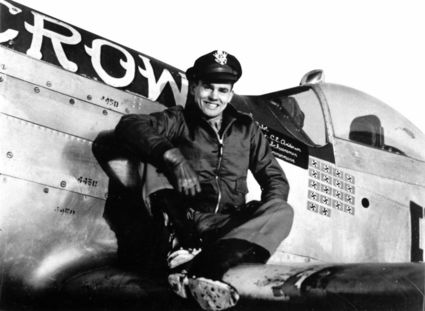Rare showstopper XP-82 Twin Mustang at AirVenture 2019
Short Flights
August 17, 2019
It is important to have dreams at every age in your life. Tom Reilly, master warbird aircraft restorer, has had his share of dreams restoring aircraft and flying them to the EAA AirVenture annual fly-in's in Oshkosh, Wisconsin.
Quotes from the EAA AirVenture website: "I flew a B-17 there in 1987, and that was good, I flew a B-24 there in 1990 and won Grand Champion, and that was good," Tom said. "This year, I flew an XP-82 there. There's lots of B-17s there, and there's a couple B-24s, but there's only one XP-82. It is absolutely the rarest thing in the world out there."
Tom said being at Oshkosh is a dream come true.
"Oshkosh is the biggest and the best air show in the world. It's the icing on the cake to finally get it here," Tom said.
Tom showed determination and perseverance when he flew his rare XP-82 twin Mustang to the 50th Anniversary celebration at Oshkosh, a dream that stretched out for 10 years. Tom likes to take projects that people say can't be done and restore them to flyable, award-winning restorations.
The restoration project in Douglas, Georgia, began after aircraft restorer Tom Reilly discovered the complete airframe on a farm in Ohio. Reilly then scoured the earth seeking engines, propellers, and a multitude of other XP-82 parts to continue the restoration. Ten years later it first flew in 2018 and then was a show stopper at Oshkosh EAA Air Venture 2019.
Tom was having difficulty in locating a left-hand turning Merlin engine and a left-hand turning prop. Mike Nixon, Vintage V-12s in Tehachapi, found a brand new left-hand engine in a garage in Mexico City and bought it. Tom contracted Nixon to build both the left-hand and right-hand turning Merlin's for his P- 82 project.

The left propeller turns opposite to the right propeller. The rotation of the engines and propellers meet on the downward turn. When sitting in the cockpit, the left engine/prop turns clockwise and right engine/prop turns counter-clockwise. You can watch the first left engine start up here: http://www.youtube.com/watch?v=YgswOBaEir4
Quoted from an article online ("The XP-82 Makes The Journey To AirVenture" from http://www.aero-news.net): "Our airplane, -83887, went to NACA (the predecessor of NASA) in Cleveland, Ohio, immediately after its first flight on April 15, 1945, sometime in August or September of 1945," Tom said. "It was a test bed for an eight-machine gun center pod, underwing rockets and a radar pod. It flew with NACA, from mid-1945 until December 15, 1949, when it skidded off the side of an icy runway, buried itself in the mud and bent the center section. The military said, 'Well, we don't need it anymore.' They already had a second P-82 so they simply scrapped it. A soon to be very well-known aircraft collector from Newbury, Ohio, named Walter Soplata found out about the slightly bent XP-82 before the military could scrap it and paid $300 for the airplane and hauled it to his Ohio farm."
The North American Aviation XP-82 was the last American piston-engine fighter ordered into production by the U.S. Air Force and was requested by General 'Hap' Arnold to escort B-29s. P-51 Mustangs couldn't keep up with the 300 mph B-29. In October 1943, the North American Aircraft design team began work on a fighter design that could travel over 2,000 miles without refueling.
Arnold said, "We need an airplane that's 50 mph faster than any current fighter and has six hours further range and will be able to cruise with the B-29s." A B-29 will cruise at 300 mph. The Mustang will cruise at 245. The P-82 will cruise at 280-300 mph. That was a whole bunch closer to the B-29."
The Twin Mustang was developed at the end of the prop-driven fighter era and at the dawn of the jet age after World War II.
The first XP-82 prototype (44-83886) was completed on May 25, 1945, and made the first successful flight on June 26, 1945.
During the Korean War, Japan-based F-82s were among the first USAF aircraft to operate over Korea. The first three North Korean aircraft destroyed by U.S. forces were shot down by F-82s.
It was neat to read that Col. Bud Anderson (retired U.S. Air Force), 357th Fighter Group triple ace and pilot of P-51 Mustang 'Old Crow' with more than 116 combat missions during World War II (without receiving a single hit from enemy fire), returned home just before the war in Europe came to a close and was assigned to Wright Field in Dayton, Ohio, as a test pilot for the P-82.
Congratulations to Tom Reilly and his team for their 10-year effort on the restoration of the magnificent XP-82 Twin Mustang. I would have loved to have heard it fly overhead. What music to the ears of an aviation nut like me! http://www.youtube.com/watch?time_continue=18&v=YFBxT5Ubt2U.
See you on our next flight!





